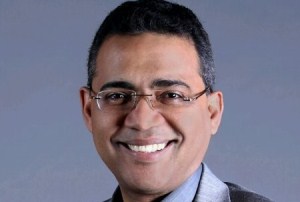Huawei says 5G commercialisation will bring 5 changes at GSMA Mobile360 MENA

Mohamed Madkour of Huawei
Huawei, a global provider of information and communications technology (ICT) infrastructure and smart devices shared key insights on commercialisation of 5G in MENA and subsequently led IoT and 5G workshops during the GSMA mobile360 MENA Conference, gathering a number of leaders and experts from the mobile telecom industry.
In his keynote, Mohamed Madkour, VP of Global Wireless Networks Marketing and Solutions, Huawei, said: “5 changes that 5G will bring beyond just a blazing speed or lower latency:
- 5G will turn connectivity into a platform benefiting people, things and industries.
- Everything will go online and stay online by default.
- The world will go all cloud supercharged with 5G and cloud massive computing power.
- Devices will be redefined and will go from plug and play to plug and think
- Experience will flow seamlessly through time, space, devices and scenarios. ”
Describing the most effective path for operators to commercialise 5G, Mohamed emphasised that every investment in LTE and its derivatives is an investment in 5G. LTE evolution towards 5G economises network supply and energises valued demand.
The executive said “There are three focus areas to profitably commercialise 5G: First, enhancing the LTE layer experience, optimising spectrum resources utilisation and getting the site resources ready. Secondly, enlarge the business boundaries beyond just consumer mobility segment such as Fixed Wireless Access (FWA), IoT and Cloud X. Last but not least, expand cloud infrastructure and utilise Artificial Intelligence (AI)”
Huawei is pioneering in this space, putting its 60,000 strong workforce to researching and developing this technology, and taking it all the way to the deployment phase. Mohamed finally highlighted “Huawei began the initial 5G research program back on 2009. Since then, partnering with operators and industry stakeholders, Huawei has been dedicated to bring 5G to reality via commercialising innovative solutions to tackle challenges in 5G deployment.
Huawei has also released end-to-end commercial products covering wireless networks, core networks, bearer networks, and terminals in preparation for commercial 5G. I am also proud to say that we will release our first 5G smartphone with a foldable screen on 2019. To date, besides conducting over 50 5G trials, Huawei has signed 22 commercial 5G contracts including 5 contracts in Middle East. More than 10,000 sites of 5G equipment have been shipped to those operators.”
Markets in MENA – particularly some of the GCC States – will be among the first countries globally to launch 5G networks, with Huawei leading the commercial deployments planned in the UAE in 2019. In the early years following these launches, operators in 12 other countries across MENA are expected to deploy 5G services, covering around 30% of the region’s population by 2025. By this time, regional 5G connections are forecast to surpass 50 million.
Huawei had launched a regional 5G ecosystem program in May 2018. Based on this platform, Huawei cooperates with global top IoT and 5G partners on open innovation projects to speed up the development of customised solutions, helping the Middle East operators to consolidate their strengths in digital transformation and succeed in their targets pursuits. The development of cross-industry collaboration platforms will enable all communities to embrace A Fully Connected Intelligent World.
5G will scale out operators’ business and significantly influence industries and economies. It will provide innovative and collaborative ways for operators to serve industries and partner with content providers. This will open more monetisation venues for their networks resulting in a quicker return on 5G investment in MENA.
Every single country in the region has embarked on a national journey to have a digitised society in the coming years. Huawei is committed to bringing full connectivity values to MENA in most innovative and economical fashion.
Comment on this article below or via Twitter @IoTGN
